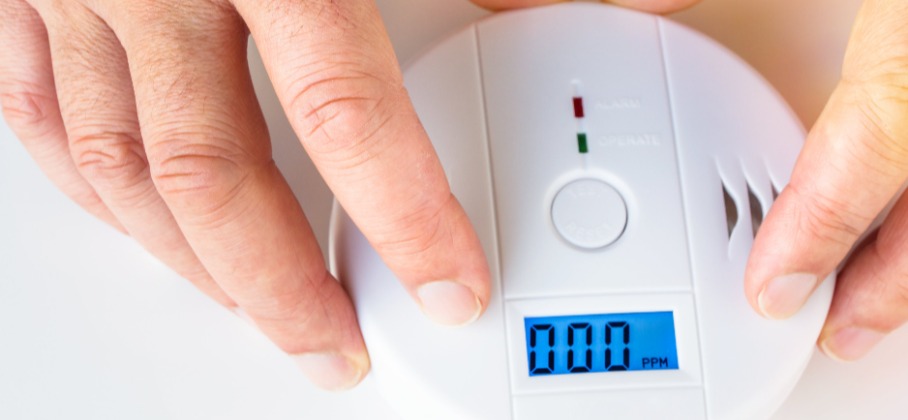Carbon Monoxide

The Ontario Fire Code says that all homes must have working carbon monoxide alarms. Carbon monoxide (CO) alarms sound an early warning if CO is present in your home. Carbon monoxide can be very dangerous and is considered the silent killer because it is odourless, colourless, and tasteless and is very difficult to detect.
What is Carbon Monoxide? |
| Carbon monoxide (CO) is an invisible, tasteless, and odourless gas.
CO comes from fuels such as propane, gasoline, natural gas, heating oil or wood when they do not burn completely in furnaces, gas or wood fireplaces, hot water heaters, stoves, barbeques, portable fuel-burning heaters, generators and vehicles. |
What are Symptoms of Carbon Monoxide Poisoning? |
| Flu-like symptoms such as headaches, nausea, dizziness, as well as confusion, drowsiness, loss of consciousness and death. |
What Must I Have in my House? |
|
If your home has an appliance that burns a fuel (natural gas, propane, oil, wood) or an attached garage, you must have a working CO alarm next to each sleeping area of the home. For added protection, install a CO alarm on every storey of the home according to manufacturer's instructions. Fuel-burning appliances can include furnaces, hot water heaters, gas or wood fireplaces, portable fuel-burning heaters and generators, barbeques, stoves and vehicles. |
What is Required in an Apartment or Condo? |
|
In condo and apartment buildings that have a service room, CO alarms must be installed in the service room and next to each sleeping area of all units above, below and beside the service room. In condo or apartment buildings that have a garage, CO alarms must be installed next to each sleeping area of all units above, below and beside the garage. |
Where to Install |
| Follow the manufacturer's instructions for where to mount CO alarms and places to avoid. |
What to do if the CO Alarm Sounds |
|
If you or other occupants have symptoms of CO poisoning, get everyone out of the home immediately. Call 9-1-1 or your local emergency services number from outside the building. Leave all doors and windows closed If no one has symptoms of CO poisoning, check to see if the battery needs replacing, or the alarm has reached its “end-of-life” before calling 9-1-1. |
Testing |
| Test CO alarms monthly by pressing the test button and listening for the alarm. Know the sound of the CO Alarm. Your CO alarm sounds different than your smoke alarm. Make sure everyone in your home knows the difference between the two alarm sounds. |
Replacing |
| Most CO alarms need to be replaced after 7 to 10 years of use. Check the CO alarm for an expiry date or the manufacturer's instructions. |
Maintenance |
| If the CO alarm has a battery, replace the battery at least once a year. Some CO alarms have a 10-year sealed battery that does not need changing. Check the manufacturer's instructions for more information. |
How to Stop Carbon Monoxide in your Home |
|
Follow these steps to prevent a carbon monoxide leak in your home:
|
Landlord and Commercial Safety
Visit the landlord and commercial safety page for information about landlord and tenant responsibilities and non-compliance penalties for individuals and corporations.

A recent Carbon Monoxide poisoning took the life of one and sent others to hospital.